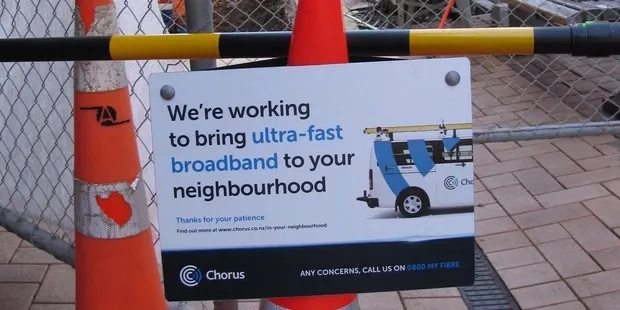Every town a Gigatown as Chorus joins 1 Gbps pack

Chorus says it will offer gigabit fibre services starting next month. It joins Enable Networks, Northpower Fibre and Ultrafast Fibre who all plan to launch gigabit wholesale broadband services in October.
From next month they will all offer download speeds of 1Gbps with uploads running at 500Mbps.
If customers take up the offer[1], the gigabit upgrade could catapult New Zealand up the global broadband speed ranking.
Chorus says it will sell residential wholesale gigabit services for $60 a month. That’s an introductory offer to get everyone hooked. From June 2017 the price will rise to $65. The business service is $75.
ISPs quick to react
Within minutes of Chorus’ announcement, MyRepublic said it would offer gigabit services in all UFB areas. Customers signing for a 24-month plan get the first six months at the wholesale rate and pay $120 a month for the rest of the term.
Spark is already taking orders for gigabit fibre plans. Orcon plans to launch gigabit services as soon as they are available.
One of the smaller ISPs, Tauranga-based Full Flavour has been quick off the block. It now sells gigabit services and says more than 3000 local businesses in Tauranga are able to take up the offer.
Another regional ISP, Taranaki’s Primo Wireless, also offers gigabit plans.
Top gear
In a media statement Chorus says its gigabit service: “Will run at the maximum speed the network electronics allows today. In practice this means customers will see download speeds of between 900Mbps and 970Mbps and upload speeds of up to 500Mbps.”
No-one is going to quibble about the difference between 900Mbps and 1Gbps because no-one will notice.
In some ways the numbers are meaningless. Once you get past 100Mbps[2], broadband speeds are more about marketing than technical practicalities.
A normal New Zealand home will struggle to use 100Mbps.
Streams of high resolution television
Gaming aside, the most demanding domestic application is 4K television and that can stream well enough inside the lowest priced 30Mbps fibre services. You’d need half a dozen 4K televisions to put pressure on a 100Mbps link.
Even hospitals and medical practices running high-end imaging equipment will struggle to make use of the high speeds. Gigabit internet might be useful if you plan to build a large hadron collider in your garage.
Yet things change. High-resolution virtual reality entertainment looms on the horizon. If it takes off, it could see households bump up against today’s speed limits. Who knows what else might be on the way?
Back in the here and now, 1Gbps means users are buying a lot of headroom. That can be helpful. A car with a top speed of more than 200kph might be overkill for driving around town. Yet when the chips are down on a rural overtaking lane, extra grunt at the top can get you out of trouble.
- Chorus says there are 5000 Gigatown subscribers in Dunedin. That shows there is clear demand for faster internet services. ↩
- That’s now most fibre users. You have to wonder why anyone buys 30Mbps fibre plans. Communications minister Amy Adams says between March and June 2016, 87 percent of new residential connections were for 100Mbps services or higher. Nine percent of new connections are 200Mbps or above. ↩
Member discussion